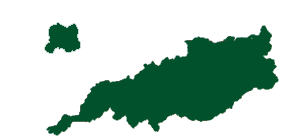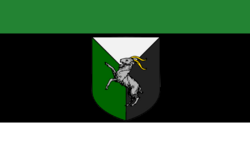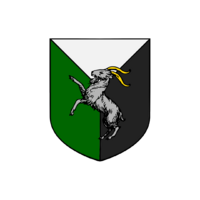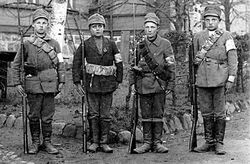Swinas: Difference between revisions
TentuberrAlt (talk | contribs) No edit summary |
TentuberrAlt (talk | contribs) |
||
| Line 56: | Line 56: | ||
== Politics == | == Politics == | ||
=== The Swinnic Liberal Party === | |||
The Swinnic Liberal Party is 1 of 2 major political parties within Swinas. Amelia Norris is the most recent liberal Prime Minister. | |||
===The Swinnic National Party === | |||
The Swinnic National Party is 1 of 2 major political parties within Swinas. Eduard Hoffman is the current Prime Minister of Swinas and the most recent national Prime Minister. | |||
== Economy == | == Economy == | ||
Revision as of 02:13, 13 October 2023
Kingdom of Swinas Königreich Swinas | |
|---|---|
 | |
| Capital | Cape Cresta City |
| National Language | German, Common |
| Ethnic groups |
|
| Demonym(s) | Swinnic |
| Government | Constitutional Monarchy |
• Monarch | King Friedrich III |
• Prime Minister | Eduard Hoffman |
| Area | |
• Total | 985,095 km2 (380,347 sq mi) |
| Population | |
• 2021 census | 42,299,153 |
| GDP (nominal) | estimate |
• Total | 448,984,350,000 |
| Currency | Swinnic Ram, Swinnic Buckling (SR, SB) |
| Driving side | right |
| Calling code | +59 |
Swinas, or, the Kingdom of Swinas is a constitutional monarchy composed of 7 autonomous districts. The capital of the Kingdom of Swinas is Cape Cresta City, where the nation was also founded under the "Duchy of Cresta" name. The nation is located in Hiraethia and is bordered by Vultesia, Wellsenfaille, and the Eldmoran Empire. The Kingdom of Swinas is a member of the Vedoti Pact and shares good relations with the Hylian Republic. The population of the Kingdom of Swinas is 42,299,153 according to a census conducted 2 years ago.
Etymology
Though the exact Etymology of Swinas is unknown, many speculate it to be related to the German word "Schwine", which means Pig.
History
The Kingdom of Swinas would not be officially established under the Swinas name until the year 1500 A.D. However, the Kingdom's Predecessor, the Duchy of Cresta, would be founded in about 1000 A.D. The nation was a key player in early Swinnic History and would be the duchy to officially unite Swinas. Over the span of 200 years, duchies in Swinas would slowly conquer they're neighbors until there were 3, now kingdoms in Swinas.
The Duchy of Cresta in particular had evolved into the Kingdom of East Swinas, encompassing a majority of the area's temperate land, as well as some desert land. By the year 1400 A.D. the Kingdom of East Swinas would declare war on the Kingdom of Central Swinas. The war lasted 3 years, and in the end, East Swinas came out on top. The Kingdom of West Swinas exploited the situation in the Kingdom of Central Swinas by conquering some of the Kingdom's Western Territories. At this point, the populous of both Swinas' wanted to unite into a singular Swinas. However, the other side wanted to be the one to accomplish the goal, and not the other.
A period of peace would surround the area and during that time, the Kingdom of East Swinas would conquer what is now known today as Nordinsel. This island would be useful in the coming Swinnic Unification War, which would happen just 60 years after the integration of the island into East Swinas. The Kingdom of West Swinas would also make moves to march westward towards the Parthenean Coast, 80 years before the Swinnic Unification War. By around 1500 A.D, both Kingdom's were prepared to go to war with each other and united Swinas.
On December 26th, 1494, The Kingdom of West Swinas declared war on the Kingdom of East Swinas. Though both kingdom's had similar army sizes, the island of Nordinsel would be used as a launching point for a Eastern Naval Landing on West Swinas. The Naval Invasion surprised West Swinas, and they were forced to take more defensible positions in the desert. The Kingdom of East Swinas had Arid trained men, and sent them to attack the key city of Allenschied. The battle was brutal, and the East Swinns were almost kicked out of the city, but the Kingdom of East Swinas won. At this point, the Kingdom of West Swinas lost all of they're moral, and surrendered, uniting Swinas.
Following the achievement of unifying Swinas, the nation would remain an Absolute Monarchy until 1788, when many within Swinas pushed for the creation of a constitution that limited the power of the king. After refusal of King Jonas to comply and create a constitution, his son, who was in favor of a constitution, couped his father, and the Leistungsbegrenzung came into effect. Over the course of the next 50 years, more and more democratic reforms would restrict the power of the king, until the king became a figurehead, though never being completely removed.
The king never being completely removed was a pressing issue for many Left-Wing Party's in the early 1900's. Party's such as the Swinnic Communist Party would advocate for the complete removal of the king, claiming that it was a shadow of the authoritarian rule Swinas was once under. This was not the only issue the Swinnic Communists had. In fact, this was probably one of their less important issues. The main complaint from the Swinnic Communist Party was that quote "greedy businessmen" controlled the country.
Eventually, rising tensions led to many Communist Militias rising up in 1921. 3 days later, the militias would unite under the People's Republic of Swinas name. The Civil War would go on to be the bloodiest conflict in Swinnic History. Some elements of the Civil War still impact the Kingdom of Swinas to this day. Luckily, the Kingdom of Swinas would defeat the communists, as told on the Swish Civil War page.
Following the victory of the Kingdom of Swinas, efforts were made to neutralize the remaining leftist threat in Western Swinas. The Kingdom also made small reforms to prevent another socialist uprising in the future. Reserve Forces of the Swinnic Civil War were called into Western Swinas to help neutralize the socialists.
Military
The Swinnic Military has been an integral part of the nation since the Duchy of Cresta's inception. Today, the Swinnic Military has 3 branches; the Swinnic Ground Forces, the Swinnic Air Force, the Swinnic Navy. Each branch usually has sub-divisions within it, such as the Swinnic Air Force, which has a Bomber, Close Air Support, Para-Trooper, and Fighter sub-division. The Swinnic Ground Forces include an Artillery, Tank, Anti-Air, and Infantry sub-division. The Swinnic Navy includes the Coast Guard, Naval Air, and Marine sub-division. The main Swinnic Navy is what you would expect from a navy. The Swinnic Military also contains a special forces division, the Spezialeinheiten.
Politics
The Swinnic Liberal Party
The Swinnic Liberal Party is 1 of 2 major political parties within Swinas. Amelia Norris is the most recent liberal Prime Minister.
The Swinnic National Party
The Swinnic National Party is 1 of 2 major political parties within Swinas. Eduard Hoffman is the current Prime Minister of Swinas and the most recent national Prime Minister.
Economy
Gold was the common currency in Swinas until 1788, when the absolute monarchy system would be abolished, and many would call for further modernization. So, the first Prime Minister of Swinas would call for the creation of an official common currency. The Swinnic Ram would be created as the paper currency of Swinas, and the Swinnic Buckling would be the metal currency of Swinas. Both were backed by gold.
Geography
Swinas contains 2 major rivers, them being the Dandora and the Kishwara. The Dandora is located in the north of Swinas and borders the Talsar Sea. The Kishwara, meanwhile, would be located at the West of Swinas, bordering the Parthenean Coast. These two rivers would be where the Duchy of Cresta (which would go on to unify Swinas), and the Duchy of Wheaton would be founded.


